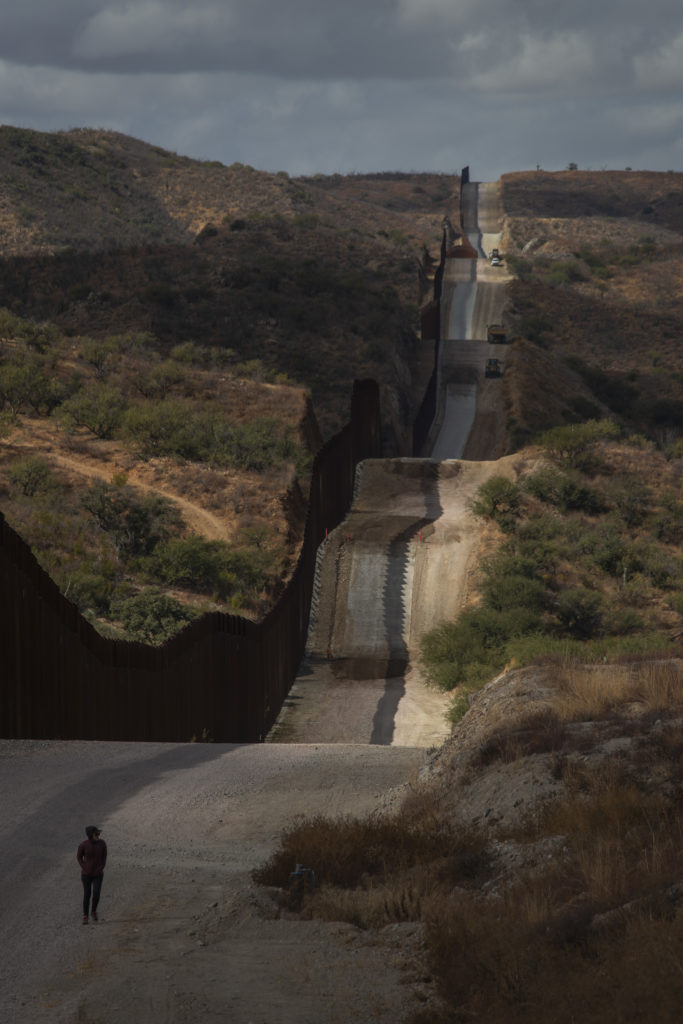Acclaimed photographer and artist Kenneth Shorr, a retired associate professor at the University of Arizona School of Art, died March 5 in Tucson. He was 73.
Shorr, who received three NEA Photography Fellowships in his career, taught as a tenured faculty member at the School of Art from 1985 to 2012 after earning a BA from Arizona State University and an MFA from UCLA. His work is held in the permanent collections of the Center for Creative Photography and the Art Institute of Chicago, among others.
“Ken’s own artistic production was prolific and eclectic — photographs, books, performances, videos, screenplays, altered album covers — all provocative and challenging and moderated with wit and humor,” said Professor Emeritus Joseph Labate, who chaired the photography program in the School of Art from 1996 to 2014.

Shorr “was hugely influential on students, and they loved being in his classes,” Labate said.
Some of those students left heartfelt remembrances on Shorr’s Facebook page. “What a wonderful person, and a talented man,” wrote Rebecca Horton, a 1998 BFA graduate in Studio Art. “He had such a huge impact on my life as a photographer and student.”
In 2013, Shorr presented a retrospective exhibition, “Action through Redaction,” at the Museum of Contemporary Art Tucson. The show was “a view into the artist’s mind, in his own words, ‘An obsessive, pathological dialog with myself,’ ” MOCA wrote.
“Shorr employs a biting wit to examine diverse subject matter,” MOCA continued. “Nothing is immune to the scrutiny of his arched brow: the influences and abuses of the mass media; familiar cultural images not excluding arcane yet disconcerting racist cartoons; clichés of government bureaucratic culture; the dark psyche of corporate idealism; or what he refers to as ‘the idiotic tautology of the politician’s stump speech.’ ”
Also a playwright, a manipulator of found objects and a large-scaled muralist, Shorr exhibited his work at the New Museum in New York, the Walker Art Center in Minneapolis, Whitney Museum of American Art in New York. His video performance work was shown in La MaMa in San Francisco and the California Institute for the Arts, and three of his plays were presented at theaters in Chicago.
He arrived as a visiting artist at the School of Art in 1984, when Labate was a graduate student. Shorr was on Labate’s thesis committee.
“Although Ken was making very different work than mine, he showed insight and offered highly valued thoughts on my work and he was exceptionally supportive,” said Labate, a 1986 MFA alum. “I witnessed him doing the same during critiques for other students, both grads and undergrads and including all the studio arts.”
When the photography program moved “into the stark institutional basement of the newly built art annex — long empty halls with doors along the way — Ken showed up one day with two radio-controlled race cars he bought at Radio Shack,” Labate said. “We would race them up and down that hall until they eventually stopped working. He made teaching fun.”
In retirement, Labate and Shorr would often meet and share thoughts on each other’s artwork — and life in general.
“Ken had a most brilliant mind and an unmatched sense of humor,” Labate said. “He will always be a presence in my head and heart.”
As a nod to Shorr’s sense of humor, the family listed his cause of death as “osteoflambosis.” The family also took out a short, whimsical obit in the New York Times on March 14. It read: “Shorr, Kenneth. March 2, 1952 – March 5, 2025. Photographer and redactor. Famed supernumerary. Lover of gewgaws and penumbras. Beloved and not to be fauxgotten.”
Shorr is survived by his wife, Alisa Eve Ziprin Shorr; son Reuven Eliot Shorr; grandsons, Elijah Nogales and Benjamin Shorr; sister, Linette Moore (Terry); and nephews, Charles Joaquin Moore and Cassius Mojave Moore. His other son, Ezra Storm Shorr, died in 2014. Alisa Shorr is a 1977 School of Art graduate in Art History.
Services were held March 9 at Evergreen Mortuary.

































